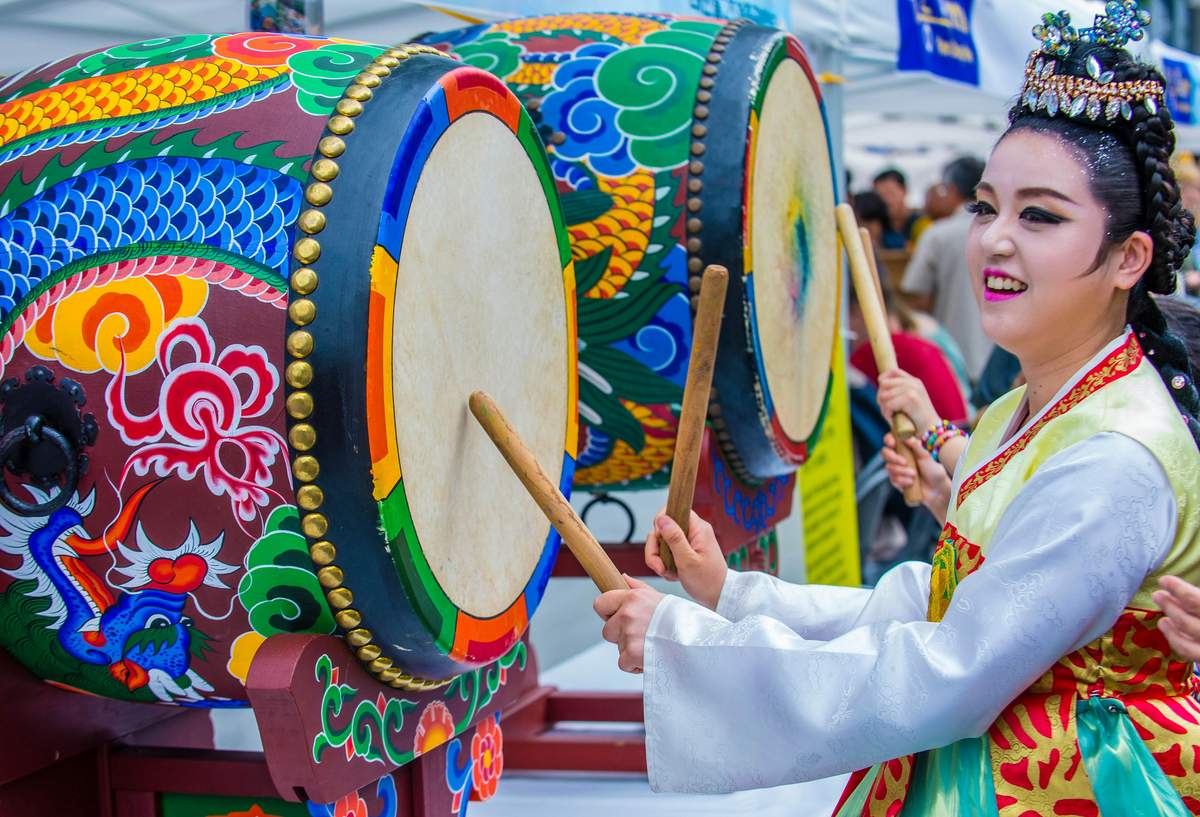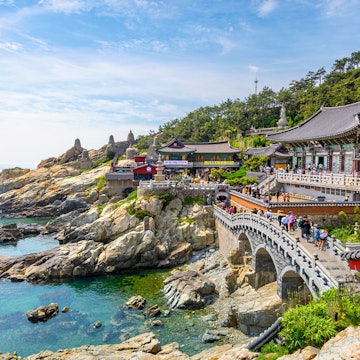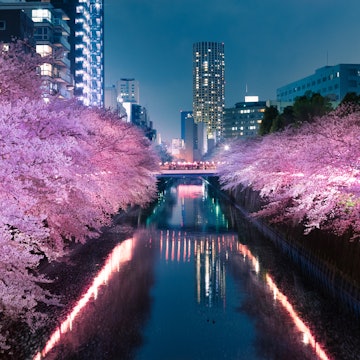
Free your Seoul: 26 of the best no-cost things to do


The annual Lantern Festival makes Cheong-gye-cheon park in downtown Seoul particularly delightful – and it’s always free © Mongkol_Chuewong / Shutterstock
A 24/7 city with something to do every hour of the day, Seoul isn't a cheap place to visit.
Going to famous observation decks, enjoying premium cuts on the Korean barbecue and partying until dawn can definitely do some damage to your credit card. But if you veer a bit away from the typical must-do list, you'll find that many of the best things to do in the capital of South Korea won't cost much at all – or even a single won.
Fill your hours with scenic walks, visit the city's most poetic sites and experience views money can't buy. Here are our favorite free things to do in Seoul.

1. Stage a photo shoot in Ihwa Mural Village
Located near Seoul's independent theater district, the Ihwa Mural Village is the place to go if you're seeking the perfect selfie. The alleyways are covered in vivid, colorful murals created by more than 70 local artists in an attempt to revitalize this once-neglected neighborhood. Popular murals include Angel Wings and Fish Swimming Upstream.
2. Savor the atmosphere at Yun Dong-ju Literature Museum
Built in honor of a beloved Korean poet, this three-room museum has occupied a former pressurization facility since 2012. Visitors can browse through old photos and first editions of Yun Dong-ju's poems – yet it's the design of the space and the moods it imbues that are the museum's real highlights. Take a stroll behind the museum on Poet's Hill and admire the N Seoul Tower from a distance – a view that could inspire lyrical musings from just about anyone.

3. Pay homage at the Jeoldusan Martyrs' Shrine
The hauntingly beautiful Jeoldusan Martyrs' Shrine commemorates the many Roman Catholics who were murdered during the Byeongin Persecution of 1866. The shrine houses a gallery and a museum displaying implements of torture that vividly evoke the site's tragic history. It's best to visit at dusk when the glow of votive candles lends an otherworldly dimension to the space.
4. Check out the contemporary art scene at the Seoul Museum of Art
One of the few free art spaces in Seoul, SeMA is a modern art museum housed in a historic building. While special exhibitions at the museum can be quite crowded and pricey, the permanent exhibitions are free and often overlooked. These include Chun Kyung-ja, Eternal Narcissist, a collection of works by the renowned Korean artist that highlight her global influences.

5. See traditional Korean homes in charming Bukchon Hanok Village
Hundreds of traditional Korean homes (hanok) make up Bukchon Hanok Village, a neighborhood that recaptures the atmosphere of Joseon-dynasty Korea. Although the authenticity of the neighborhood is often debated – some of the hanok are newly built while others are a century old – the verdict on the charm of the small alleyways and incredible views is unanimous.
6. Hang out by the river in Hangang Park
Seoul's most famous free site is this park along the Han River – one of the city's best – which zigzags through the city. Beautiful lookouts and pleasant walks can be found at any point in the park, yet it's the views from the Mangwon-dong neighborhood that are arguably the best and a firm local favorite. If you're here in summer, many free events take place as part of the Hangang River Festival; the park's outdoor film screenings are terrific.

7. Soak up the arts at Oil Tank Culture Park
A cultural center created from five transformed 1970s-era oil tanks, the Oil Tank Culture Park plays host to free concerts, exhibitions and lectures. Even when there's nothing in particular happening, you can easily pass a few hours exploring the space's hidden nooks and watching musicians practicing in the outdoor amphitheater. The venue's unique curves make it a favorite among photographers.
8. Enjoy a good read at the Cheongun Literature Library
At the foot of Mt Inwang, the Cheongun Literature Library is undoubtedly one of the most beautiful libraries in Korea. The functional lower level is home to an average collection of books – but on the second level, the library's reading rooms are housed in a striking traditional Korean house, making for a unique place to settle in with a good read. Spacious and sunny, it's a bibliophile's dream come true.

9. Linger in the Gyeongui Line Forest Park
A park built on the route of 100-year-old train tracks that once led to North Korea, Gyeongui Line Forest Park is one of the highlights of Seoul's northwest side, and it runs through several trendy neighborhoods. On summer nights, you'll see plenty of picnickers having drinks and listening to buskers with guitars in the Yeonnam-dong portion of the park. In good weather, pianos are also set up outside for the musically inclined to perform for the public.
10. Learn about the city's past at the Seoul Museum of History
Even special exhibitions are almost always free at the popular Seoul Museum of History, near Gyeonghuigung Palace. While the museum boasts relics from the Joseon dynasty, the exhibition hall of donated items on the first floor makes the strongest impression, with everything from old computers, cassette tapes, T-shirts from the '60s and other household goods used by ordinary citizens. Free events showcasing Korean culture often take place during local holidays.
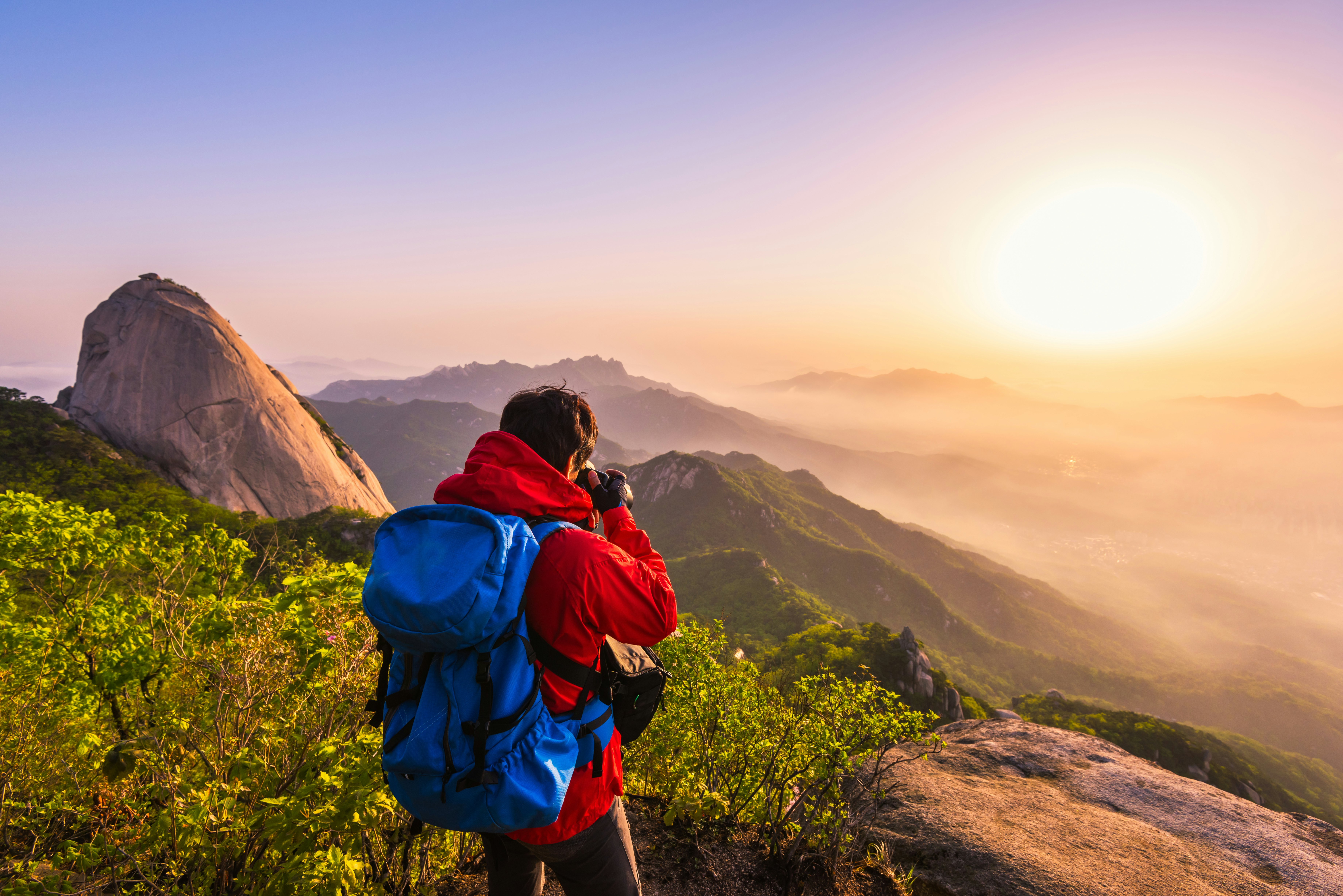
11. Take in heavenly vistas from Bukhansan's highest peak
With dozens of peaks in the area, Seoul has no shortage of mountains to climb. Yet ask any avid hiker for the best walk in the area, and you'll likely be sent packing up the slopes of 836m (2743ft) Bukhansan. Those willing to reach the mountain's tallest peak will be handsomely rewarded with heavenly views – and perhaps even some makgeolli (traditional Korean rice wine) from a friendly fellow climber: locals are known to share their mountaintop drinks with tourists at the summit.
12. Hike Inwangsan for easier city views
Less demanding than Bukhansan, 338m (1109ft) Ingwangsan still offers breathtaking views of Seoul for hikers, as well as a free history lesson. A series of ancient fortress walls are preserved here, and from the trail, you can spot Gyeongbokgung Palace in the distance. Be sure to check out the uncanny Seonbawi (Zen Rocks) and the Guksadang shamanist shrine on your way up.
13. See the sights for free on a free Seoul walking tour
Make a reservation three days ahead to take advantage of Seoul Tourism's free walking tour program, which is staffed by volunteer guides. While the quality of the tours varies, they are free and are offered in Korean, English, Japanese, Chinese and other languages, and cover a huge range of themes, from exploring local markets and historic sites to finding traces of the artists and writers who once lived in one of the city's oldest neighborhoods. Tours are limited to 10 people each (20 for some palace tours), and reservations must be made in advance.
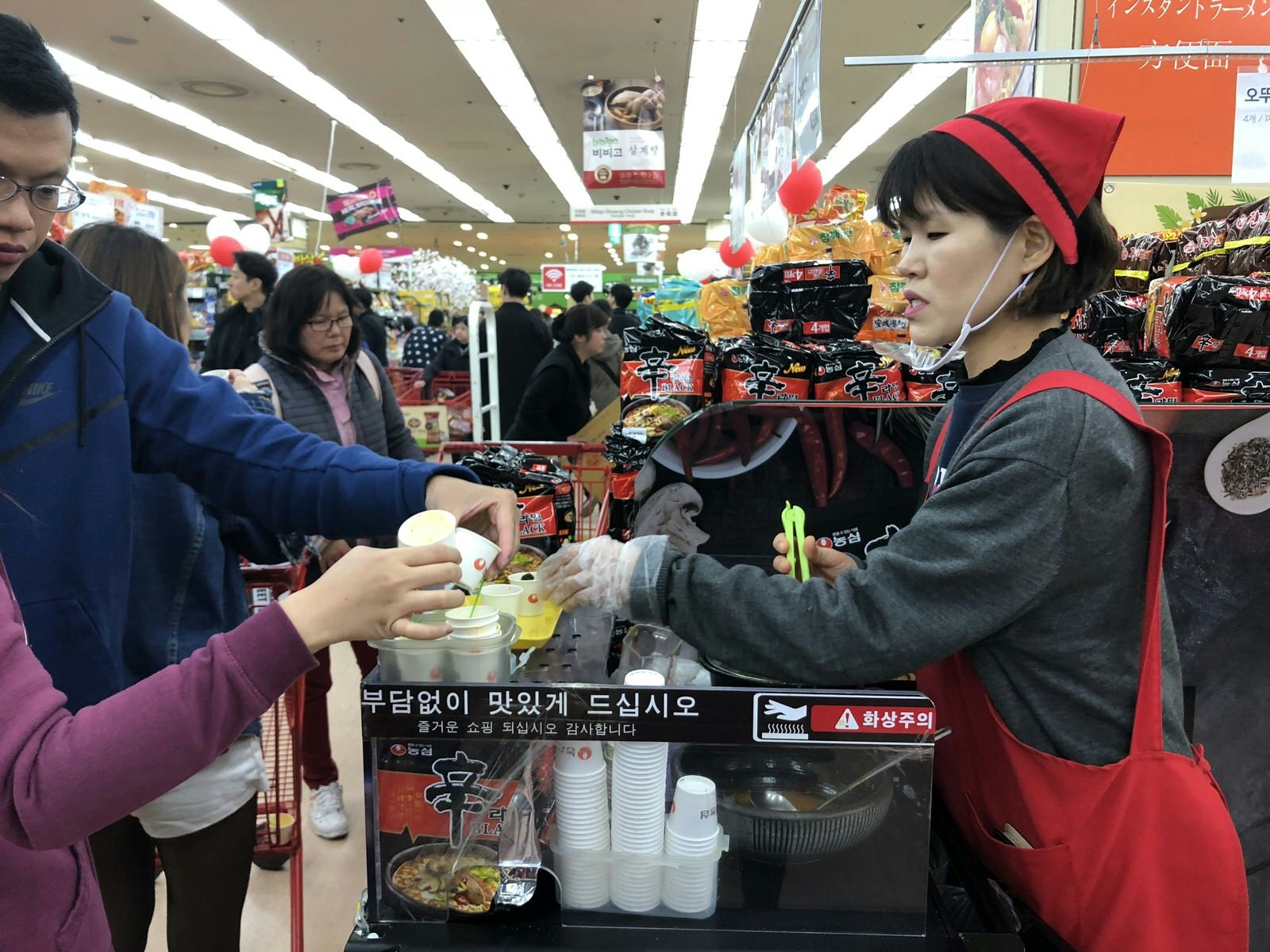
14. Sample the wares at Seoul Station's Lotte Mart
Larger grocery stores in South Korea tend to offer incredibly generous samples, but few are as munificent as the Lotte Mart inside Seoul Station. Sample-givers usually speak basic English, Japanese and Chinese – and aren't afraid to give you seconds. Try the instant noodle aisle at 6pm on a weekday, and you might be able to skip dinner. (Though we wouldn't recommend it.)
15. Take a breather at Bongeun-sa
Anyone staying south of the Han River and looking for some culture after shopping in the packed COEX Mall should check out Bongeun-sa, a temple that traces its history to 794 CE, during the Silla kingdom. Even though much of the original site was destroyed by a fire in 1939, the temple's air of serenity, woodblock carvings of the Avatamsaka Sutra and a library of 3479 Buddhist scriptures make it worth a visit.
16. Window shop at Dongmyo Flea Market
Many of Seoul's markets are free to check out and well worth exploring – and the collection of used goods at the Dongmyo Flea Market is more about browsing and less about buying. This random assortment of everything from electronic massagers to old Korean coins and piled-up hills of cheap T-shirts is most active on warm, dry weekends. It's located near Dongmyo Park (84, Nangye-ro 27-gil, Jongno-gu).
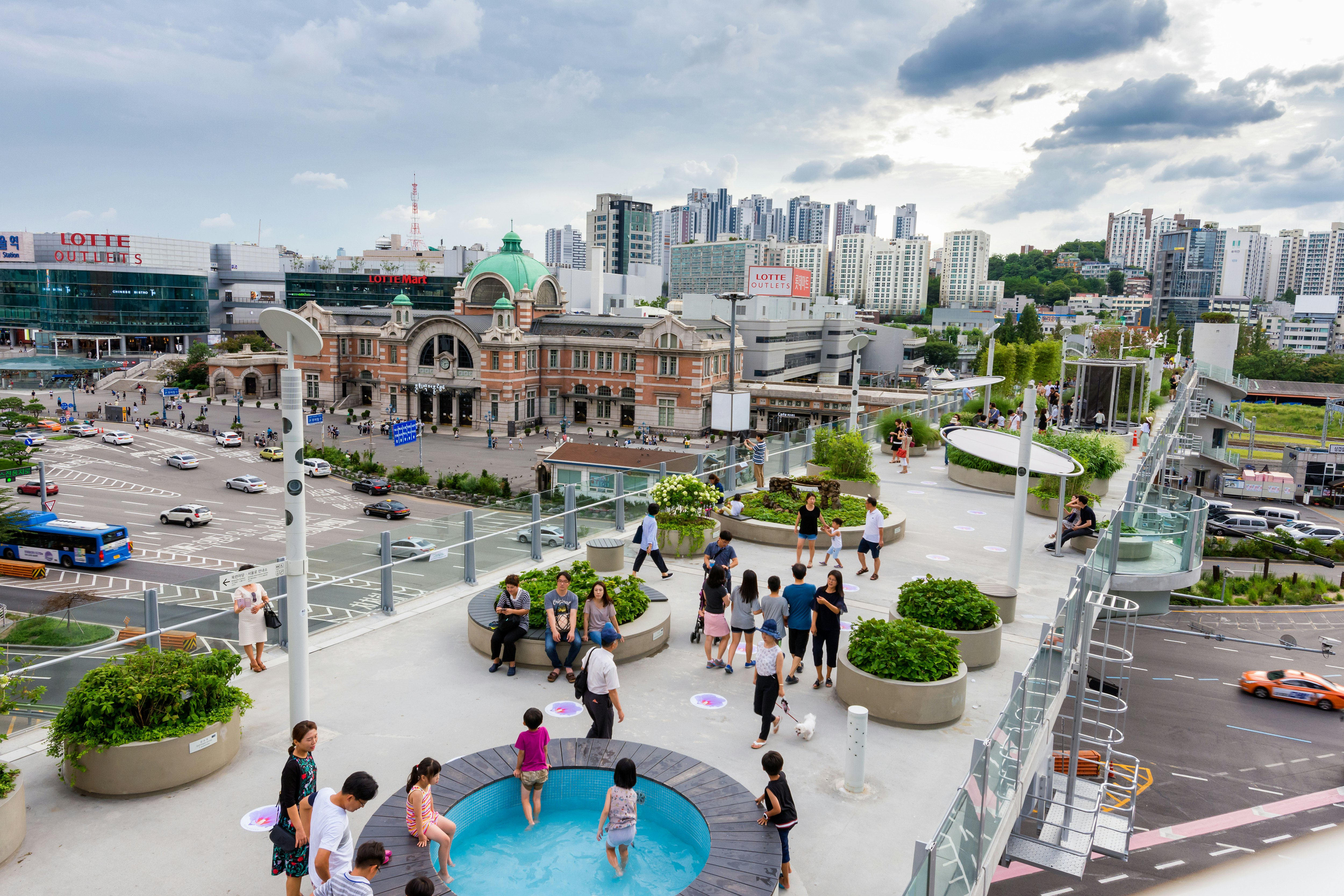
17. Rise above the fray at Seoullo 7017
Often compared to the High Line in New York City, Seoullo 7017 is a "sky garden" that runs from Seoul Station to Namdaemun Market. Converted from a former highway overpass in 2017, this 1km (0.6-mile) park boasts more than 20,000 plants and fine city views and plays host to a plethora of public events. The brave can stand on glass-covered holes through the overpass and look down at the cars whizzing below.
18. Channel European vibes at Seoul Anglican Cathedral
Although Myeong-dong Cathedral is Seoul's most famous – and perhaps most historically significant – church, it could be argued that the Seoul Anglican Cathedral is the capital's most beautiful. Designed by English architect Arthur Dixon and built in the Romanesque Revival style, this distinctly European edifice is a sight to behold, inside and out. You can visit the church for free, and regular English-language services are held on Sundays at 9:30am in the crypt chapel.

19. Unwind streamside at the Cheong-gye-cheon
One of the city's ecological marvels, the Cheong-gye-cheon is an artificial stream that runs through downtown Seoul. Walking the pleasant, greenery-lined pathways that run along the water is a great way to unwind in the evening, and the stream is even more dazzling during the famous Lantern Festival every November. The Cheong-gye-cheon Museum is also free if you'd like to learn about the site's complex history.
20. See the Moonlight Rainbow Fountain's water show
From April to October, people come to the Banpo Bridge section of the Han River Park to see the Moonlight Rainbow Fountain water show. Choreographed with lights and music, 380 water jets put on a show soundtracked by everything from classical music to pop and rock. Call the Korea Travel Hotline (+82-2-1330) to check the fountain's schedule on the day of your visit.
21. Browse the National Museum's permanent collection
Displaying more than 12,000 artifacts that span from prehistory to modern times, the National Museum of Korea is South Korea's largest museum. While special exhibitions carry an entrance fee, you won't be left wanting after browsing the free permanent collection. Be sure to see the photogenic 10-story pagoda from Gyeongcheon-sa Temple at the center of the museum. There's also a children's museum, which is free but requires an online reservation.

22. Learn about Buddhism at Gilsang-sa
Although Jogye-sa in the heart of downtown is Seoul's best-known temple, perhaps its most beautiful shrine is Gilsang-sa, located off the beaten path in Seongbuk-dong. A restaurant-turned-temple, Gilsang-sa only opened in 1997. Its idyllic natural surroundings and wealth of English-language programs make it a must-visit for anyone interested in Buddhism – or those just seeking a (free) place to get away from it all.
23. Take a mini-break at Seonyudo Park
Repurposing a former water purification plant, this green island in the middle of the city is the first park of its kind in the country. Locals and visitors come to picnic or sunbathe in the botanical gardens and green spaces.
24. Bring a date for a stroll along Seoul City Wall
Originally built in 1396, Seoul City Wall is a national treasure and a wonderful place to hike. For locals, it's also a popular date spot. Try an evening stroll along the portion of the wall in Naksan Park, near Hyehwa Station: it's hard not to be seduced as the warm glow of the ancient fortress's lights and the panoramic city views sparkle in your lover's eyes.

25. Admire the futuristic architecture at Dongdaemun Design Plaza
A draw for anyone who loves cutting-edge architecture, the multifunctional Dongdaemun Design Plaza is one of architect Zaha Hadid's greatest works. Exhibitions, fashion shows and other events are held regularly; not all of them are free, but the edifice itself is free to walk around – and it's definitely worth a (long) look.
26. Celebrate Culture Day at venues across town
On the last Wednesday of every month – aka Culture Day – performance centers, museums and cultural sites across Seoul open for free or at a discounted rate. The city government works in collaboration with venues to create this extensive list of freebies that includes everything from the five grand palaces to the National Museum of Modern and Contemporary Art and Seoul Performing Arts Company. Discounts for most major movie theaters are also available on Culture Day.





